Merge two sorted linked lists such that the merged list is in reverse order
Difficulty Level
Medium
Asked In
Microsoft
Three Solutions Discussed
The problem would have been quite easy if arrays would be in place of the linked lists because accessing an element in an array is much easier. Well, we have gone through the following solutions in this blog.
- Broute force approach 1 — Reversing both the list and merging
- Brute force approach 2 — Merging both the list and reversing
- Iterative approach — Single Scan using the merge function
Key Takeaway after reading this blog
This is a good problem to understand the application of reversing and merging to solve a linked list problem. We use these ideas to solve several other interview problems in the linked list.
Let’s understand the problem
Given two sorted linked lists of size m and n respectively, write a program to merge both such that the resulting list becomes in decreasing order.
Examples
Input: list1: 8->10->20->35, list2: 12->30->50
Output: res: 50->35->30->20->12->10->8
Input: list1: 7->15->20, list2: 20->25
Output: res: 25->20->20->15->7
Brute force approach 1: Reversing both the list and merging
If we reverse both linked lists and merge them in the same format (decreasing), we get the answer.
Algorithm Pseudo Code
Reverse a linked list
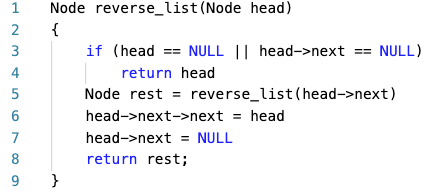
Merge two linked list in decreasing order
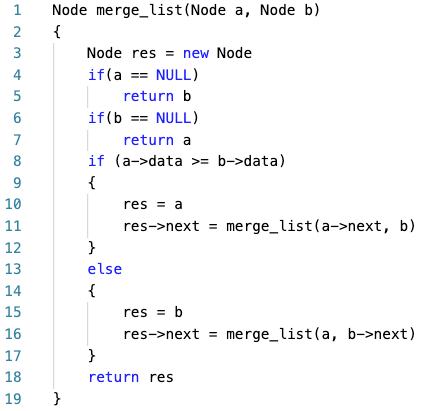
Complexity Analysis
The overall time complexity of reversing =O(n) +O(m) = O(n+m) (Think!)
The time complexity of merging both the lists = O(n+m) (Think!)
Overall time complexity = The time complexity of reversing + The time complexity of merging = O(n+m) + O(n+m) = O(n+m)
Space Complexity = O(n + m), due to recursion stacks of reversing both the linked list.
Brute force approach 2: Merging both the list and reversing
This approach is very similar to the previous one. Just we have to change the order of the steps. So, first, do the merging followed by the reversing of the resulting list.
Algorithm Pseudo Code
merge two linked list in increasing order
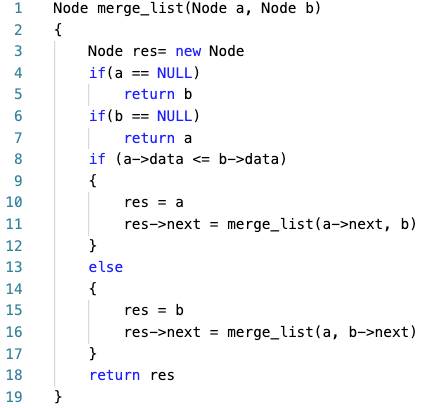
Reverse a linked list
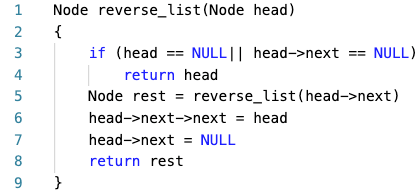
Complexity Analysis
Overall time complexity = The time complexity of reversing + The time complexity of merging = O(n+m) + O(n+m) = O(n+m)
Space Complexity = O(n + m), due to recursion stacks of reversing both the linked list.
3. Iterative approach - Single scan using the merge function
This is an efficient solution and it does the works in O(1) space and linear time. Idea is to traverse both the lists simultaneously and insert the minimum of both elements (of both lists) at the beginning of the new list. If only one list remains non-empty insert all elements of the list into the new list.
Algorithm Pseudo Code
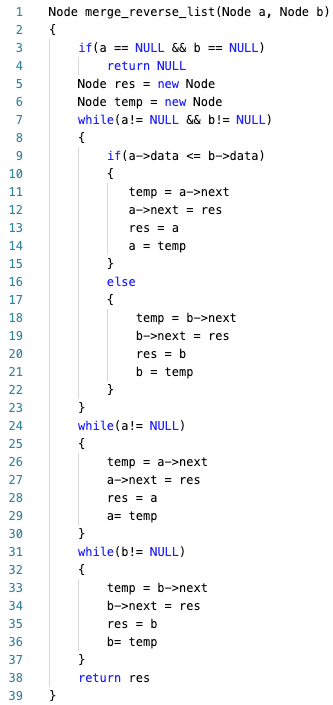
Complexity Analysis
We are traversing each node once in both the list.
Time Complexity = O(m + n), due to loops iterations.
Space Complexity =O(1), as no extra space has been used.
Possible question by the Interviewer
Similar Questions To Solve
- Merge Two Sorted Linked Lists
- Merge Sorted Arrays
- Reverse A Linked List
- Palindrome Linked List
- Reverse a linked list from position m to n
- Swap List Nodes in pairs
Enjoy learning, enjoy algorithm!
